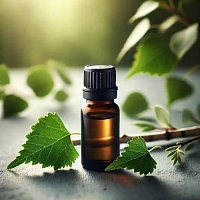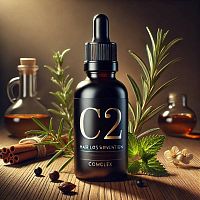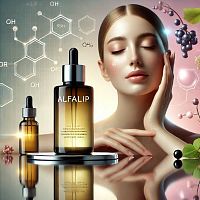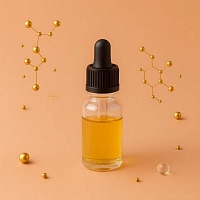-
 Absolutes
Absolutes
-
 Active Complexes
Active Complexes
-
 Actives and Peptides for Cosmetics
Actives and Peptides for Cosmetics
-
 Amino Acids
Amino Acids
-
 Food Flavorings
Food Flavorings
-
 Ayurveda
Ayurveda
-
 Vitamins
Vitamins
-
 Gelling Agents and Thickeners
Gelling Agents and Thickeners
-
 Hydrosols and Floral Waters
Hydrosols and Floral Waters
-
 Hydrolyzed Proteins
Hydrolyzed Proteins
-
 Fragrant and aromatic substances
Fragrant and aromatic substances
-
 Acids, Salts, Alcohols, and Alkalis
Acids, Salts, Alcohols, and Alkalis
-
 Preservatives and Antioxidants
Preservatives and Antioxidants
-
 Cosmetic Raw Materials
Cosmetic Raw Materials
-
 Dyes, Pearlescents, and Glitters
Dyes, Pearlescents, and Glitters
-
 Face Masks, Scrubs, and Dried Flowers
Face Masks, Scrubs, and Dried Flowers
-
 Oils, batters, macerates, oil mixtures
Oils, batters, macerates, oil mixtures
-
 Candle Supplies
Candle Supplies
-
 Melt and Pour Soap Bases
Melt and Pour Soap Bases
-
 Base for cosmetics, cream, serum, shampoo
Base for cosmetics, cream, serum, shampoo
-
 Fragrance Oils
Fragrance Oils
-
 Surfactants
Surfactants
-
 Peelings for Skin
Peelings for Skin
-
 Herbal Powders and Plant
Herbal Powders and Plant
-
 Silicones and Conditioning Surfactants for Hair
Silicones and Conditioning Surfactants for Hair
-
 Raw materials for dietary supplements
Raw materials for dietary supplements
-
 Packaging for Cosmetics and Perfumes
Packaging for Cosmetics and Perfumes
-
 Molds, Packaging, Tools
Molds, Packaging, Tools
-
 Organic Extracts
Organic Extracts
-
 Emollients for Cosmetics
Emollients for Cosmetics
-
 Emulsifiers
Emulsifiers
-
 Essential Oils
Essential Oils
Borax Decahydrate (Sodium Tetraborate Decahydrate): Versatile Ingredient for Cosmetic Formulations
Discover the multifaceted applications of Borax Decahydrate (Sodium Tetraborate Decahydrate) in your cosmetic creations. This hydrated crystalline salt of boric acid is a versatile ingredient with a range of functionalities that can enhance the properties and performance of various personal care products. While historically used in diverse applications, its specific cosmetic uses, when carefully formulated, offer unique benefits for certain product types. Please note that due to evolving regulations and safety considerations, its use in cosmetics is subject to specific guidelines and limitations, which formulators must adhere to diligently.
Applications and Areas of Use in Cosmetics:
Borax Decahydrate can be incorporated into specific cosmetic formulations for its unique properties, always keeping in mind the required safety assessments and regulatory compliance:
- Emulsifying Aid (in specific systems): In certain traditional or specialized formulations, borax can react with waxes (like beeswax) and oils to create emulsions. This saponification reaction forms a soap in situ, which acts as an emulsifier, helping to bind oil and water phases. This is more common in older or DIY-style formulations.
- Buffering Agent: Borax can act as a buffer in cosmetic formulations, helping to maintain a stable pH. This is crucial for the stability and efficacy of the product and for ensuring skin compatibility within a specific pH range.
- Viscosity Modifier (in specific systems): In some formulations, particularly those involving gums or polymers, borax can cross-link these materials, leading to an increase in viscosity and the formation of gel-like textures. This requires careful balancing and understanding of the specific polymer used.
- Cleansing Agent (in very specific, rinse-off applications): Due to its mild alkalinity, borax has been historically used in some cleansing preparations. However, this application requires careful formulation and thorough rinsing to avoid skin irritation. Its use in modern cleansing products is less common due to the availability of milder surfactants.
- Preservative Booster (in specific formulations): Borax can exhibit some mild antimicrobial properties and may act as a preservative booster in certain formulations, enhancing the efficacy of other preservatives. This is not its primary function, and it should not be relied upon as the sole preservative.
- Ingredient in Foot Soaks and Bath Salts (for softening water): Borax can help soften hard water, which can enhance the effectiveness of soaps and cleansing agents in bath and foot soak formulations. It can also contribute a mild alkaline feel to the water.
Important Considerations for Cosmetic Use:
- Regulatory Restrictions: The use of borax in cosmetics is subject to regulations in various regions. Formulators must be aware of and comply with these restrictions, including permitted concentration limits and specific product types where its use is allowed.
- Skin Sensitivity: Borax can be irritating to the skin and mucous membranes, especially at higher concentrations or with prolonged exposure. Formulations must be carefully balanced and tested for skin compatibility. Rinse-off formulations are generally considered safer than leave-on products when borax is used.
- Formulation Expertise: Using borax effectively and safely in cosmetics requires a thorough understanding of its chemical properties and potential interactions with other ingredients. It is crucial to formulate with precision and conduct appropriate stability and safety testing.
- pH Control: When using borax as a buffer, careful monitoring and adjustment of the formulation's pH are essential to ensure it falls within the acceptable range for cosmetic products and skin compatibility.
Key Benefits for Specific Cosmetic Formulations (with careful consideration):
- Emulsification in Traditional Systems: Enables the creation of stable emulsions in specific wax-and-oil-based formulations where traditional soap-based emulsification is desired.
- pH Buffering: Helps maintain the stability and skin compatibility of formulations by resisting changes in pH.
- Viscosity Enhancement in Certain Gels: Allows for the creation of thicker, gel-like textures when used in conjunction with specific polymers.
- Water Softening in Bath Products: Improves the lathering and cleansing action of soaps in hard water.
- Potential Preservative Boosting: May enhance the effectiveness of other preservative systems.
- Global Shipping: Our online store offers delivery worldwide, making this specialized ingredient accessible globally.
Cosmetic Recipe: Traditional Cold Cream (Illustrative - Requires Careful Formulation and Testing)
This recipe is a simplified illustration of a traditional cold cream formulation that utilizes borax for emulsification. It is crucial to conduct thorough research, stability testing, and safety assessments before attempting to create and market such a product.
| Ingredient | Percentage (%) |
|---|---|
| Mineral Oil | 55% |
| Beeswax | 15% |
| Distilled Water | 28% |
| Borax Decahydrate | 0.5% |
| Fragrance Oil (oil-soluble) | 1.5% |
Instructions:
- In a heat-safe beaker, combine the mineral oil and beeswax. Heat gently on a water bath until the beeswax is completely melted.
- In a separate heat-safe beaker, dissolve the borax decahydrate in the distilled water and heat to approximately the same temperature as the oil phase.
- Slowly add the warm borax solution to the oil-wax mixture while stirring vigorously. Continue stirring until a thick, white emulsion forms.
- Remove from heat and continue stirring as the cream cools.
- Once the cream has cooled to below 40°C (104°F), gently stir in the fragrance oil.
- Continue stirring until the cream is completely cool and smooth.
- Transfer the cold cream to a clean container.
Application Recommendations (for the illustrative recipe):
- This traditional cold cream is typically used as a makeup remover and night cream. Apply a thin layer to the face and massage gently. To remove makeup, wipe off with a soft cloth or cotton pad.
- Due to the potential for skin sensitivity with borax, it is essential to perform a patch test before widespread use.
- This formulation relies on the saponification reaction between beeswax and borax for emulsification. The proportions of beeswax and borax are critical for emulsion stability.
- Ensure thorough mixing during the emulsification process is crucial for a stable product.
- This illustrative recipe lacks a dedicated preservative system beyond the potential mild effect of borax. For a commercially viable product, an effective and compatible preservative system is essential and must be carefully chosen and tested.
- Adhere to all relevant cosmetic regulations regarding the use of borax and other ingredients. Consult safety data sheets and regulatory guidelines for specific usage limits and restrictions.
- Conduct thorough stability testing to ensure the product remains stable under various storage conditions.
- Perform appropriate microbiological testing to ensure the product is safe for consumer use.
Disclaimer: The provided recipe is for illustrative purposes only and should not be replicated without thorough cosmetic chemistry knowledge, proper safety assessments, and adherence to all applicable regulations. The use of borax in cosmetics requires careful consideration and expertise.
And also go to the Blog from Мыло Опт, where we share useful information about creating the right natural cosmetics
| INCI | Sodium Tetraborate Decahydrate | |
| Other | ||
| Color product | white or colorless | |
| Features | All information presented on the site is for reference only | |
| Input percentage | косметические средства — не более 5%. Развести в горячей (75°С) воде, после ввести в крем; в лечебных целях применяют в виде 3-5% раствора для промываний и смазываний полости рта, носа и носоглотки при различных инфекционных заболеваниях (трахеит, насморк, стоматит и др.) | |
| Minimum count | 1 | |
| Name | Borax 10-hydrate (sodium tetraborate) 50 g | |
| Packaging | container for transportation | |
| Packing | 50 grams | |
| Solubility | easily in water (2: 1 in hot) and glycerin, insoluble in alcohol | |
| View | fine crystalline powder | |
| Valid until | 06.2027 | |
-
Date:8 DecemberAuthor:Оксана, ІзюмReviews
Очень довольна покупкой восков для изготовления свечей. Они легко плавятся и имеют приятный аромат.
Date:7 May 2025Author:Диана, РовенькиReviewsЯ дуже рада, що знайшла цей магазин! Тут я можу купити все необхідне для створення натуральної косметики за доступними цінами. Якість продуктів чудова, а доставка швидка.









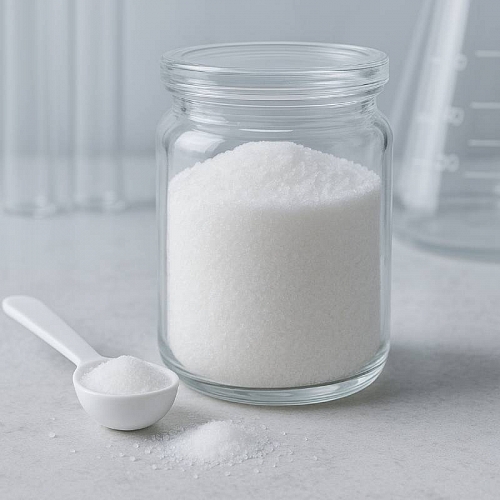
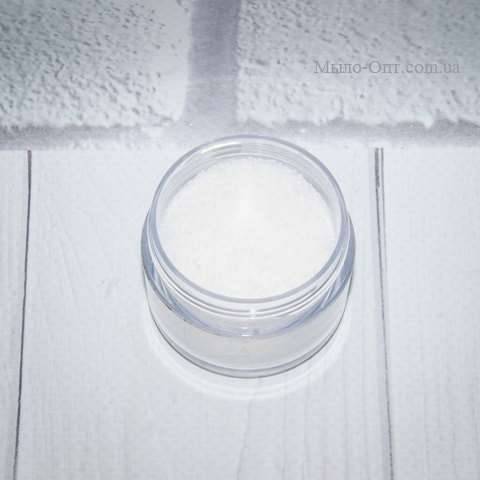
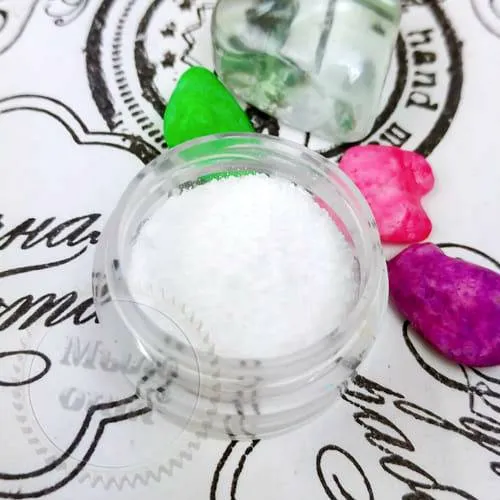



 Add to cart
Add to cart Buy in 1 click
Buy in 1 click

 Add a review
Add a review To favorites
To favorites To compare
To compare






